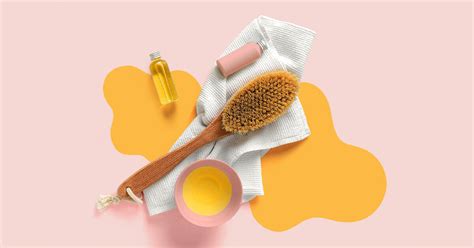Ingrown Hair Prevention 101: Exfoliate Right
Ingrown hairs—those pesky, inflamed bumps that appear when a hair curls back into the skin instead of growing out—are a common frustration, especially for those with curly or coarse hair. While genetics play a role, proper skincare, particularly exfoliation, can significantly reduce their occurrence. This guide dives deep into the art of exfoliation for ingrown hair prevention, answering your burning questions and equipping you with the knowledge to achieve smoother, clearer skin.
What Causes Ingrown Hairs?
Before we delve into exfoliation, understanding the root cause is crucial. Ingrown hairs happen when a hair follicle becomes blocked, preventing the hair from emerging properly. This blockage can be caused by:
- Dead skin cells: Accumulated dead skin cells create a barrier, trapping the hair beneath the surface.
- Tight clothing: Friction from tight clothing can push hairs back into the skin.
- Hair removal methods: Shaving, waxing, and epilating can all contribute to ingrown hairs by altering the hair's growth pattern.
- Curly or coarse hair: These hair types are more prone to curving back into the skin.
How Often Should I Exfoliate to Prevent Ingrown Hairs?
The frequency of exfoliation depends on your skin type and the products you use. Generally, 2-3 times a week is a good starting point for most people. Those with sensitive skin might benefit from exfoliating only once or twice a week, while those with oilier skin might tolerate more frequent exfoliation. Always listen to your skin; if it feels irritated or inflamed, reduce the frequency.
What's the Best Exfoliation Method for Ingrown Hairs?
There are two main types of exfoliation: physical and chemical.
Physical Exfoliation:
This involves using a scrub or tool to physically remove dead skin cells. Popular options include:
- Exfoliating gloves or sponges: These offer a gentle yet effective way to remove dead skin.
- Sugar or salt scrubs: These homemade or store-bought scrubs gently slough away dead skin cells. Ensure you use fine grains to avoid irritation.
- Facial brushes: These can be effective, but be gentle to avoid damaging your skin.
Important Note: Avoid harsh scrubbing, as this can worsen ingrown hairs and lead to irritation.
Chemical Exfoliation:
This involves using chemical compounds to dissolve dead skin cells. Effective ingredients include:
- Alpha Hydroxy Acids (AHAs): Such as glycolic acid and lactic acid, these acids gently exfoliate and improve skin texture.
- Beta Hydroxy Acids (BHAs): Salicylic acid, a BHA, is particularly effective at unclogging pores and treating acne, which often accompanies ingrown hairs.
Chemical exfoliants are generally gentler than physical exfoliants, making them a better choice for sensitive skin.
What are the Best Products for Exfoliating to Prevent Ingrown Hairs?
The best product will depend on your individual skin type and preferences. Look for products that are specifically formulated for ingrown hairs and contain ingredients like AHAs, BHAs, or gentle physical exfoliants. Always patch test new products before applying them to a large area of skin.
Can I Exfoliate Every Day to Prevent Ingrown Hairs?
No, daily exfoliation is generally not recommended, especially with physical exfoliants. This can lead to irritation, dryness, and potentially worsen ingrown hairs. Sticking to 2-3 times a week with a gentle exfoliant is a safer and more effective approach.
Are There Any Other Tips to Prevent Ingrown Hairs?
Exfoliation is a key component of ingrown hair prevention, but other strategies can also help:
- Moisturize regularly: Keeps the skin supple and reduces the likelihood of blockage.
- Use a sharp razor: Dull razors increase the risk of ingrown hairs.
- Shave in the direction of hair growth: This minimizes irritation.
- Avoid tight clothing: Opt for breathable fabrics.
- Consider alternative hair removal methods: Laser hair removal or electrolysis offer long-term solutions.
Conclusion
Ingrown hairs can be frustrating, but with the right approach to exfoliation and a comprehensive skincare routine, you can significantly reduce their occurrence. Remember to be gentle, listen to your skin, and choose products that are appropriate for your skin type. By following these tips, you can achieve smoother, clearer skin and say goodbye to those pesky ingrown hairs.

